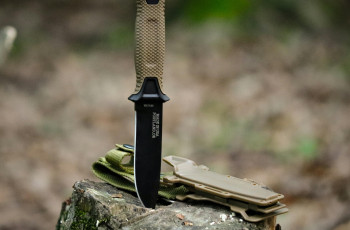If you’re in the world of precision machining, then you know just how crucial it is to have the right tools for the job. When it comes to heavy-duty die grinder setups, customization is key. Whether you’re shaping metal or removing material with precision, having a tailored setup can make all the difference in achieving the desired results. In this article, we’ll explore the importance of customizing heavy-duty die grinder setups for precision machining tasks and how it can enhance your productivity and efficiency. So, get ready to learn some valuable tips and tricks that will take your machining skills to the next level!
1. Understanding Heavy-Duty Die Grinders
1.1 What is a Heavy-Duty Die Grinder?
A heavy-duty die grinder is a powerful handheld tool used in precision machining tasks. It is designed to remove material from workpieces with high accuracy and efficiency. This versatile tool is commonly used in various industries such as aerospace, automotive, and medical device manufacturing.
1.2 Features and Functions of Heavy-Duty Die Grinders
Heavy-duty die grinders are equipped with several features and functions that make them suitable for precision machining. These grinders typically have a powerful motor that enables them to operate at high speeds and deliver consistent performance. They also come with a variable speed control feature, allowing users to adjust the speed according to the specific task at hand.
In addition to speed control, heavy-duty die grinders often have attachments and accessories that further enhance their functionality. These attachments can include grinding wheels, cutting discs, and sanding pads, among others. The availability of various attachments allows the grinder to perform a wide range of machining tasks with precision.
1.3 Importance of Heavy-Duty Die Grinders in Precision Machining
Heavy-duty die grinders play a crucial role in precision machining tasks. Their high-speed rotation and powerful motor enable them to remove material with precision, resulting in accurately machined workpieces. Whether it’s deburring, shaping, or polishing, die grinders provide the necessary control and accuracy required in precision machining. By using these grinders, manufacturers can achieve the desired dimensions and surface finish on their workpieces, ensuring high-quality end products.
2. Customization Options for Heavy-Duty Die Grinders
2.1 Choosing the Right Grinder Motor
When customizing a heavy-duty die grinder setup, one of the key considerations is the motor. Different motors offer varying power and speed capabilities, allowing users to tailor the grinder to their specific machining tasks. For lighter applications, a lower wattage motor may be sufficient, while heavier tasks may require a more powerful motor. It is essential to select a grinder motor that can provide the necessary torque and RPM range for the intended machining operations.
2.2 Selecting the Suitable Grinding Wheel
Another crucial aspect of customizing a die grinder setup is selecting the appropriate grinding wheel. The choice of grinding wheel depends on the type of material being machined and the desired finish. For example, a diamond grinding wheel is suitable for grinding hard materials like ceramics or carbides, while a silicon carbide wheel is better suited for softer materials like aluminum or brass. By selecting the right grinding wheel, you can ensure optimal performance and surface finish in your precision machining tasks.
2.3 Attachments and Accessories for Precision Machining
The versatility of heavy-duty die grinders lies in their ability to accommodate various attachments and accessories. Customizing your grinder setup with the right attachments can significantly expand its capabilities. Some common attachments include cutting discs, sanding pads, wire brushes, and polishing wheels. By choosing the appropriate attachments, you can perform different machining operations with your die grinder, making it a versatile tool for precision work.
2.4 Ergonomic Considerations for Customization
Customization is not limited to the technical aspects of die grinder setups; ergonomic considerations also play a crucial role. Ergonomics focuses on optimizing user comfort and minimizing the risk of ergonomic injuries during prolonged tool use. When customizing your grinder setup, pay attention to factors such as handle design, grip material, and overall weight distribution. Ensuring a comfortable and ergonomic setup will enhance user productivity and reduce the likelihood of fatigue or musculoskeletal injuries.

3. Adjusting Speed and RPM for Precision Work
3.1 Understanding the Relationship between Speed and Material
In precision machining, the speed at which a die grinder operates plays a vital role in achieving accurate results. Different materials require different speeds to prevent overheating or damaging the workpiece. For example, softer materials may require higher speeds, while harder materials may require lower speeds. Understanding the relationship between speed and material is crucial in customizing your die grinder setup for precision work.
3.2 Adjusting RPM for Different Machining Tasks
Die grinders often come with variable speed control features, allowing users to adjust the RPM (revolutions per minute) according to the specific machining task. This flexibility is particularly useful when working with different materials or when transitioning between tasks that require varying speed settings. By adjusting the RPM, you can ensure optimal cutting or grinding performance while maintaining the integrity of the workpiece.
3.3 Using Variable Speed Control Features
Variable speed control features enable users to set the RPM within a specific range based on the needs of the machining task. This capability allows for greater control over the die grinder’s performance and helps achieve precision work. Whether you need to slow down for intricate shaping or speed up for quick material removal, the ability to adjust the speed on the fly is a valuable customization option for heavy-duty die grinders.
3.4 Benefits of Customizing Speed for Precision Machining
Customizing the speed of your die grinder setup offers several benefits in precision machining. By adjusting the RPM to match the material and task, you can minimize the risk of overheating or damaging the workpiece. Furthermore, customized speed settings allow for increased control and accuracy, resulting in high-quality machined parts. Tailoring the speed to the specific requirements of each machining operation ensures optimal performance and enhances overall productivity.
4. Enhancing Stability and Control
4.1 Upgrading Grinder Handles and Grips
Achieving stability and control during precision machining tasks is of utmost importance. Upgrading the handles and grips of your die grinder can greatly enhance your ability to maneuver the tool with precision. Ergonomically designed handles provide a comfortable and secure grip, reducing hand fatigue during extended periods of tool use. Additionally, improved grip materials can help reduce slippage, ensuring a steady and controlled operation.
4.2 Using Auxiliary Supports for Heavy-Duty Applications
For heavy-duty applications that require added stability, the use of auxiliary support systems is recommended. These support systems can include tool rests, workpiece fixtures, or clamps, depending on the specific machining task. By providing additional support and fixation, auxiliary systems help minimize vibrations and ensure precise machining. Customizing your die grinder setup with these supports can significantly improve stability and control during heavy-duty machining operations.
4.3 Techniques for Reducing Vibrations
Vibrations are a common challenge in precision machining, as they can negatively impact the accuracy of the machined parts. When customizing your die grinder setup, it is important to consider techniques for reducing vibrations. One effective method is to balance the grinding wheel to minimize uneven weight distribution, which can cause vibrations. Additionally, choosing a die grinder with advanced vibration reduction technology can further enhance stability and control.
4.4 Importance of Stability and Control in Precision Machining
Stability and control are fundamental to achieving accurate and repeatable results in precision machining. Customizing your die grinder setup to enhance stability and control can greatly improve the quality of your work. By minimizing vibrations, upgrading handles and grips, and using auxiliary supports, you can ensure precise and controlled material removal, resulting in high-quality machined parts.

5. Precision Tooling for Customized Die Grinder Setups
5.1 Overview of Precision Tooling Options
Precision tooling refers to the various tools and accessories used in conjunction with die grinders to achieve accurate and precise machining. These tooling options can include collets, chucks, mandrels, and arbors, among others. Each precision tooling component serves a specific purpose in holding and securing the workpiece or cutting tool, ensuring stability and precision during machining operations.
5.2 Choosing the Right Collets and Chucks
Collets and chucks are key precision tooling components used to hold and secure cutting tools or attachments on die grinders. Choosing the right collets and chucks is critical in achieving stability and accuracy during machining. Collets provide a tight grip on the cutting tool, minimizing runout and ensuring precise cuts. Chucks, on the other hand, allow for quick and easy tool changes, enabling efficient workflow and minimizing downtime.
5.3 Custom Tool Holders for Specific Machining Tasks
Custom tool holders are designed to accommodate specific machining tasks and provide optimal stability and control. These holders are often tailored to hold specialized cutting tools or attachments, allowing for precise machining in intricate areas or challenging workpiece geometries. By customizing your die grinder setup with the appropriate tool holders, you can maximize the efficiency and precision of your machining operations.
5.4 Importance of Precision Tooling in Customized Setups
Precision tooling is an essential component of customized die grinder setups. The use of high-quality collets, chucks, and custom tool holders ensures stability, accuracy, and repeatability of machining processes. By investing in precision tooling, you can achieve consistent and precise results, reduce the risk of tool slippage or breakage, and optimize the overall performance of your die grinder setup.
6. Managing Heat and Cooling Systems
6.1 Cooling Options for Heavy-Duty Die Grinders
Heat management is crucial in heavy-duty die grinding applications to prevent overheating and damage to the tool and workpiece. Customizing your die grinder setup with cooling options can effectively manage heat buildup. Cooling systems can include air cooling or liquid cooling mechanisms. Air cooling relies on the flow of external air to dissipate heat, while liquid cooling utilizes a coolant to maintain optimal operating temperatures. By implementing suitable cooling options, you can prolong the life of your die grinder and ensure consistent performance.
6.2 Effective Heat Dissipation Techniques
In addition to cooling systems, effective heat dissipation techniques are essential in precision machining tasks. Techniques such as intermittent grinding, using the appropriate grinding wheel, and controlling the feed rate can help manage heat buildup. Intermittent grinding allows the tool and workpiece to cool down between grinding passes, preventing excessive heat generation. Similarly, selecting the right grinding wheel with appropriate abrasive properties can reduce heat transfer to the workpiece, minimizing the risk of thermal damage.
6.3 Importance of Managing Heat in Precision Machining
Managing heat is vital in precision machining to preserve the integrity of both the tool and the workpiece. Excessive heat can cause thermal expansion, affecting the accuracy of the machined parts and potentially leading to premature tool wear. By customizing your die grinder setup with effective heat management solutions, you can maintain the required temperatures for optimal machining performance while minimizing the risk of thermal damage.
6.4 Utilizing Built-in Cooling Systems
Many heavy-duty die grinders come with built-in cooling systems that provide a convenient and effective solution for managing heat. These systems are designed to regulate the temperature of the grinder during operation, preventing overheating and maintaining performance. When customizing your die grinder setup, consider the availability and effectiveness of built-in cooling systems to ensure proper heat management in precision machining tasks.

7. Automation and Advanced Control Features
7.1 Overview of Automation Options in Die Grinders
Automation is revolutionizing the manufacturing industry, and die grinders are no exception. Today, die grinders can be equipped with advanced control features and automation options, further enhancing their performance and customization capabilities. Automation options can include programmable control systems, remote operation capabilities, and integrated sensors, among others.
7.2 Benefits of Advanced Control Systems
Advanced control systems offer numerous benefits in precision machining tasks. These systems provide greater control and repeatability, allowing for precise material removal and consistent results. With features like programmable settings, users can automate specific machining operations, reducing the need for manual adjustments and minimizing human errors. The integration of advanced control systems in die grinder setups can significantly improve efficiency, productivity, and accuracy.
7.3 Implementing Programmable Customization
Programmable customization enables users to automate and customize specific machining processes according to their requirements. This level of customization allows for the execution of complex machining tasks with minimal user intervention. By programming the die grinder to follow precise tool paths, feed rates, and speed settings, users can achieve consistent and accurate results, even for intricate or repetitive machining operations.
7.4 Precision Machining with Automated Die Grinder Setups
The integration of automation and advanced control features in die grinder setups has revolutionized precision machining. By customizing your die grinder setup with these features, you can automate repetitive tasks, enhance precision, and optimize workflow. Automated die grinder setups offer enhanced efficiency, reduced downtime, and improved repeatability, making them ideal for high-volume or complex machining applications.
8. Safety Precautions for Customized Die Grinder Setups
8.1 Understanding Potential Hazards
While customizing your die grinder setup offers numerous benefits, it is essential to prioritize safety when working with these powerful tools. Understanding the potential hazards associated with die grinder operations is crucial. Hazards can include high-speed rotation, sparks, flying debris, and noise. By identifying these hazards, you can develop appropriate safety measures to mitigate the risks.
8.2 Personal Protective Equipment (PPE)
Personal Protective Equipment (PPE) plays a vital role in ensuring operator safety when working with die grinders. When customizing your die grinder setup, it is important to provide suitable PPE for operators. This can include safety glasses or goggles to protect the eyes from flying debris, hearing protection to minimize noise exposure, and gloves to guard against sparks or hot workpieces. Implementing proper PPE measures is essential in preventing injuries and creating a safe working environment.
8.3 Proper Ventilation and Dust Extraction
Proper ventilation and dust extraction are crucial in maintaining a safe working environment when using die grinders. These tools generate dust, sparks, and fumes that can pose health risks if inhaled. By customizing your die grinder setup with effective ventilation and dust extraction systems, you can ensure the removal of airborne contaminants, minimizing the risk of respiratory illnesses or explosions. Ventilation systems should be properly designed to prevent the accumulation of flammable particles or gases.
8.4 Regular Maintenance and Safety Inspections
Regular maintenance and safety inspections are essential for the safe operation of customized die grinder setups. Operators should perform routine inspections of the tool, ensuring that the grinder is in good working condition. This includes checking for loose or damaged components, inspecting power cords for any signs of wear, and verifying the proper functioning of safety features. Regular maintenance and safety inspections help identify potential issues before they escalate, ensuring the long-term safety and performance of your die grinder setup.
9. Case Studies: Successful Customized Die Grinder Setups
9.1 Case Study 1: Precision Machining in Aerospace Industry
In the aerospace industry, precision machining plays a critical role in manufacturing aircraft components with tight tolerances. By customizing die grinder setups to meet specific requirements, aerospace manufacturers have been able to achieve remarkable precision and repeatability. The use of advanced control systems, precise speed and RPM settings, and specialized tooling has resulted in accurate and efficient material removal. Customized die grinder setups have proven invaluable in producing high-quality aerospace components that meet stringent safety standards.
9.2 Case Study 2: Automotive Engine Component Manufacturing
Automotive engine component manufacturing demands precision and efficiency. Customized die grinder setups have played a significant role in this sector, enabling manufacturers to achieve the necessary precision for critical engine components. By employing advanced control features, automakers can automate machining processes, reducing human error and ensuring consistent results. Additionally, customized tooling options, such as specialized collets and chucks, provide the stability and accuracy required for machining intricate engine parts.
9.3 Case Study 3: Medical Device Prototyping
The medical device industry relies on precision machining for prototyping and manufacturing complex medical devices. Customizing die grinder setups for medical device machining has allowed manufacturers to produce intricate parts with high precision. The use of advanced control systems and automation features has streamlined the prototyping process, enabling faster development and evaluation of medical devices. Additionally, ergonomic considerations in customizing die grinder setups ensure operator comfort and minimize the risk of repetitive strain injuries during long machining sessions.
9.4 Lessons Learned from Case Studies
The case studies mentioned highlight the importance of customizing die grinder setups for precision machining tasks. By leveraging advanced control systems, precise tooling options, and appropriate customization, manufacturers in various industries have achieved exceptional precision, efficiency, and safety. The customization of die grinder setups to meet specific industry requirements demonstrates the versatility and value of these tools in precision manufacturing applications.
10. Future Trends and Innovations
10.1 New Technologies in Heavy-Duty Die Grinders
The field of heavy-duty die grinders continues to evolve with advancements in technology. One emerging trend is the integration of IoT (Internet of Things) capabilities, enabling connectivity and data exchange between die grinders and other manufacturing systems. This connectivity allows for real-time monitoring, remote control, and predictive maintenance of die grinder setups, maximizing efficiency and minimizing downtime.
10.2 Industry Innovations Driving Precision Machining
Precision machining is driven by continuous innovations in materials, cutting tools, and machining techniques. Industry innovations such as advanced ceramics, diamond coatings, and improved cutting strategies are shaping the future of precision machining. These innovations demand corresponding advancements in heavy-duty die grinders and customized setups to effectively handle these new materials and cutting challenges.
10.3 Anticipated Advancements in Customization
The customization of die grinder setups is poised for further advancements in the coming years. This includes improved automation options, enhanced ergonomics, and the integration of cutting-edge sensors and monitoring systems. Future customization advancements will aim to streamline machining processes, reduce operator fatigue, and enable real-time optimization for increased productivity and cost-effectiveness.
10.4 The Future of Precision Machining with Die Grinder Setups
The future of precision machining with die grinder setups holds great promise. Through continuous customization and innovation, these tools will remain at the forefront of precision machining technologies. As industries continue to demand higher accuracy, efficiency, and flexibility, die grinder setups will evolve to meet these demands, ensuring the production of high-quality machined parts for a wide range of applications.



